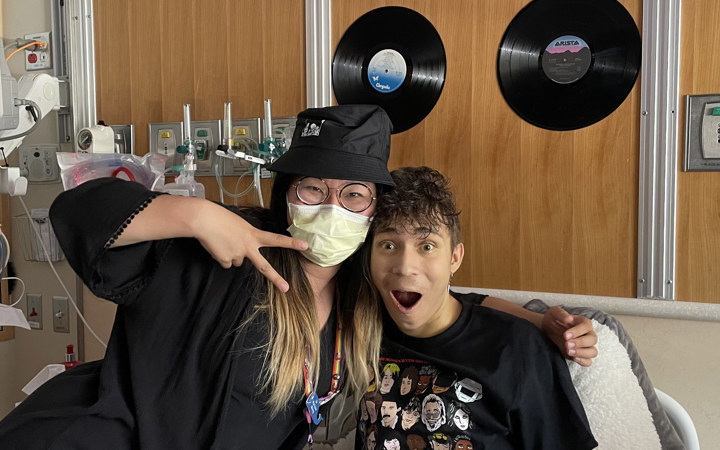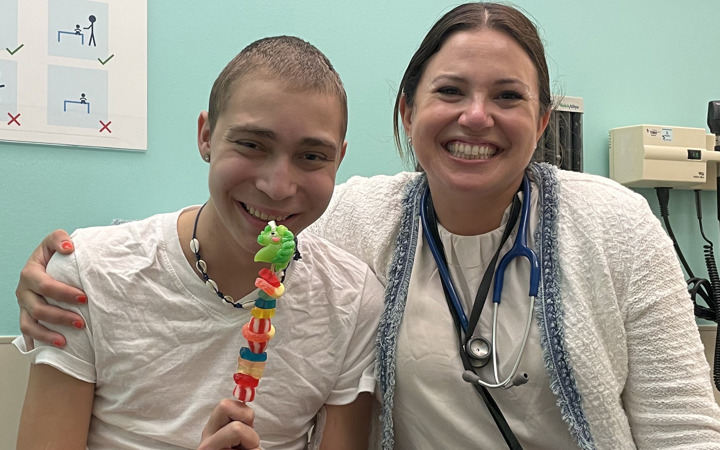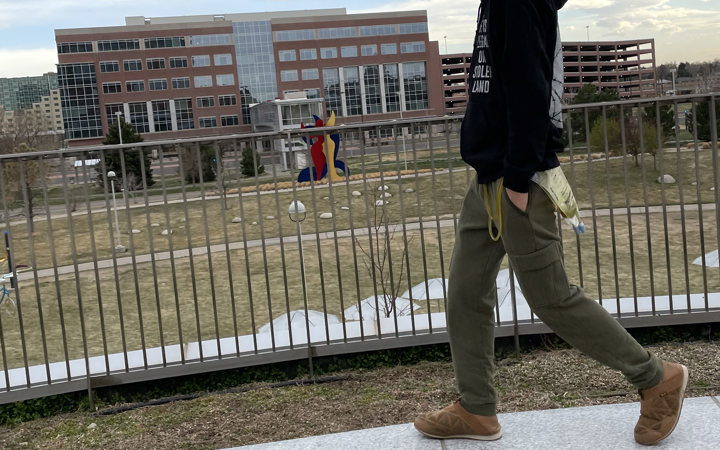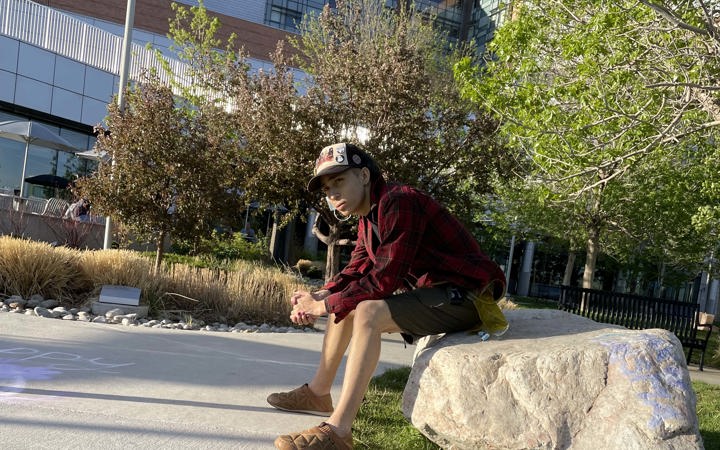- Doctors & Departments
-
Conditions & Advice
- Overview
- Conditions and Symptoms
- Symptom Checker
- Parent Resources
- The Connection Journey
- Calm A Crying Baby
- Sports Articles
- Dosage Tables
- Baby Guide
-
Your Visit
- Overview
- Prepare for Your Visit
- Your Overnight Stay
- Send a Cheer Card
- Family and Patient Resources
- Patient Cost Estimate
- Insurance and Financial Resources
- Online Bill Pay
- Medical Records
- Policies and Procedures
- We Ask Because We Care
Click to find the locations nearest youFind locations by region
See all locations -
Community
- Overview
- Addressing the Youth Mental Health Crisis
- Calendar of Events
- Child Health Advocacy
- Community Health
- Community Partners
- Corporate Relations
- Global Health
- Patient Advocacy
- Patient Stories
- Pediatric Affiliations
- Support Children’s Colorado
- Specialty Outreach Clinics
Your Support Matters
Upcoming Events
Colorado Hospitals Substance Exposed Newborn Quality Improvement Collaborative CHoSEN Conference (Hybrid)
Monday, April 29, 2024The CHoSEN Collaborative is an effort to increase consistency in...
-
Research & Innovation
- Overview
- Pediatric Clinical Trials
- Q: Pediatric Health Advances
- Discoveries and Milestones
- Training and Internships
- Academic Affiliation
- Investigator Resources
- Funding Opportunities
- Center For Innovation
- Support Our Research
- Research Areas

It starts with a Q:
For the latest cutting-edge research, innovative collaborations and remarkable discoveries in child health, read stories from across all our areas of study in Q: Advances and Answers in Pediatric Health.


Seth: Four Pediatric Liver Transplants, an Incredibly Complex Procedure and an Incredibly Unique Perspective

Seth is no stranger to hospital rooms. When he was 2 years old, he was diagnosed with a genetic liver disease known as progressive familial intrahepatic cholestasis (PFIC). At 8, he was diagnosed with a type of liver cancer known as hepatocellular carcinoma, which led to liver failure. That’s when Seth got his first liver transplant.
Seth’s complicated medical history made it harder for his body to accept a transplant. Unfortunately, the first transplant was not successful and complications led to two more liver transplants. After the third liver transplant, Seth and his family were able to return to a normal life and he lived for about 8 years without serious complications. But in November 2021, his artery clotted and he developed bilomas that were not responsive to medical management or interventional radiology treatment.
A fourth transplant was not an easy decision for Seth’s medical team to make. The risks of morbidity and mortality with a fourth transplant were very high given the extensive scarring in Seth’s abdomen, his known inferior vena cava stricture and his immunologic predisposition to reject another organ. With these complications, many hospitals would have moved Seth on to palliative care.
Luckily, Seth had a dedicated liver transplant team on his side along with the collaboration of more than a dozen other departments at Children’s Hospital Colorado. At 17, Seth received his fourth liver transplant.
Hope for a final pediatric liver transplant
Leading up to the surgery, the massive team prepared for every possible complication. Specialists from 15 different service areas, including Hepatology, Infectious Disease, Interventional Radiology, Immunology and Hematology and others, all met to plan and prepare for Seth’s surgery.
“It was truly amazing to be part of a Zoom call of over 50 people all dedicated to saving the life of one boy,” says Amy Feldman, MD, Liver Transplant Medical Director.
During the surgery, specialists and surgeons from these programs, as well as Cardiology, Transplant, Anesthesiology, the Pediatric Intensive Care Unit (PICU) and Cardiac Intensive Care Unit (CICU) also were prepped and ready to step in at a moment’s notice to offer additional support.
Michael Wachs, MD, Chief of Abdominal Transplant Surgery says Seth’s liver transplant was one of the most complex transplants he has ever performed. This is quite a statement given that Dr. Wachs has performed more than 1,500 liver transplants.
“Because of Seth’s previous transplants, it was very challenging to get into his belly and once we were there, the dense scar tissue made it very difficult,” Dr. Wachs says. “However, we persevered and were able to get him through the surgery.”
Even though he had such a difficult surgery, Seth was only in the ICU for about a week and was able to be discharged from the hospital in under 3 weeks. Seth was back to living his normal life just a few months later.
A unique perspective
Each transplant brought Seth renewed hope. But each time he and his family learned he needed another one, the stress, anxiety and fear returned. Each trip to the operating room also brought new experiences for Seth and gave him a unique perspective. Having spent so much time in the hospital and having gone through multiple medical procedures, Seth offers advice that may help others who are on a similar path.
Seth says he thinks it’s important to find a passion or interest that you can really dig into. For him, it was studying philosophy. “This may sound silly at first,” Seth says, “but especially for people in their teens, finding something you can lose yourself in really helps. You’ll get sick of watching movies and playing video games after a while and it’s good to have something that you can really get into.”
Seth says the trick is to not only have something that distracts you during your stay, but also engages you. That is why he’s a big fan of our Integrative and Creative Care (ICC) Department, which includes the Child Life Program and the Ponzio Creative Arts Therapy Program. Our child life specialists and specialized therapists are dedicated to improving kids’ experiences during their hospital stay. For the younger kids, they utilize therapeutic play and explain procedures with the aid of stuffed animals, among other services. Integrative and creative care therapists from the ICC Department also provide art therapy, dance and movement therapy, drama therapy, music therapy and yoga therapy. Seth was immediately drawn to music therapy.
Shelley Goldberg is a music therapist at Children’s Colorado and worked with Seth during his stay.
“One way that I could support Seth during his time awaiting transplant was to provide space – literally and figuratively – in which he could be creative,” Shelley says. “We spent some time in the Ponzio Creative Arts Therapies Music Studio, where Seth had access to an electronic drum kit, full-size piano and an amplifier for his electric guitar. I also visited Seth at bedside with portable instruments on days when he was not medically able to go to the studio.”
Seth had a strong musical background before coming to the hospital so Shelley basically played backup and supported him any way she could. At the end of their sessions, Shelley said they would have to pull him away from the studio because he clearly felt at home there.
“With older patients,” Shelley says, “we can really explore concrete ways music can be utilized as a tool to support positive coping, reduce pain perception and help process significant life events. These are skills I hope patients continue to access after their hospital admission.”
“The people from [ICC] are awesome,” he says, “They are just helping people get through a hard time. It’s funny how they can be so significant and it’s something you might not think is significant at all, but it just becomes so important to each patient specifically.”
Even though Seth has had his fill of hospitals for now, he says he has become even more interested in medicine. In fact, if he were to pursue a job in the medical field, he says he would look to join a department like the ICC to help support kids just like him. We hope the next time we see Seth in a hospital, he’s wearing an employee badge.
Everybody helps
Seth says he’s eternally grateful to the dedicated medical team that saved his life and will never be able to say ‘thank you’ enough. Staying in the hospital, both preparing for his surgery and in recovery, gave Seth plenty of time to meet everyone who played a part in his medical journey. He eventually met most of the staff on his floor and learned their schedules. He knew when nurses were scheduled to check on him, when janitors were scheduled to clean the rooms and when child life specialists would come see him.
“Everybody who works at that hospital deserves more than anyone could ever give them,” Seth says.
After rattling off a list of names of the “amazing” nurses that Seth befriended, he says the anesthesiology team also played a vital role in helping him keep the right mindset.
“When you’re going into that scary situation, the anesthesiology team is there to hype you up before the procedure and it makes a huge difference.”
“Make friends with everyone,” Seth says. “You’re going to be seeing them for a while, day-in and day-out. The doctors, the nurses, anesthesiologists, the janitors. The janitors were so sweet and it’s so nice to have a clean room. It’s amazing what a difference that can make.”
Seth made friends with everyone. And while he looked forward to his conversations with all our providers, we know our providers looked forward to visiting with him just as much. Maybe one day, instead of lying in the hospital bed, Seth will be standing next to it, making friends with someone who’s in the position he once was.



 720-777-0123
720-777-0123












